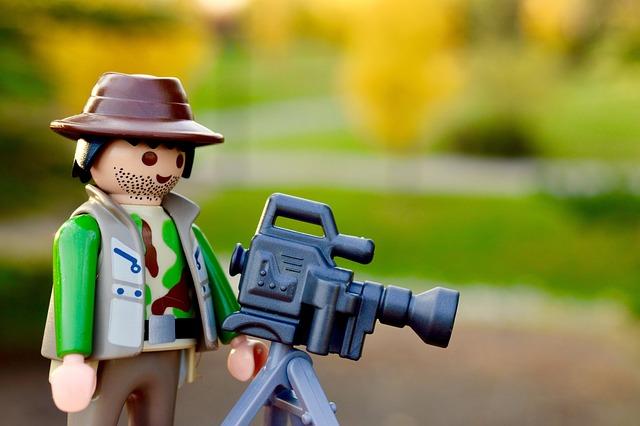In the ever-evolving world of cinema, the delicate dance between narrative depth and technical prowess continues to captivate both creators and audiences alike. As filmmakers push the boundaries of visual effects and innovative cinematography, a compelling question arises: should the heart of storytelling take precedence over the allure of technical showmanship? This inquiry delves into the core of filmmaking, exploring whether the soul of a story should lead the charge or if the spectacle of cutting-edge techniques can stand as its own form of art. Join us as we navigate this cinematic crossroads, examining the delicate balance between narrative and technology in the quest to create unforgettable movie experiences.
Balancing Storytelling and Spectacle: A Cinematic Dilemma
In the realm of cinema, the interplay between narrative depth and visual spectacle presents a complex challenge. Filmmakers often grapple with the decision of whether to prioritize the heart of the story or the allure of dazzling effects. Striking the right balance can be the key to crafting a memorable cinematic experience. On one hand, a strong narrative can resonate with audiences, leaving a lasting impact and fostering emotional connections. On the other, technical showmanship can captivate viewers, offering a feast for the senses that draws them into the world on screen.
- Storytelling: Engages emotions, provides depth, and fosters character development.
- Spectacle: Offers visual excitement, enhances immersion, and showcases technological prowess.
While some argue that a compelling story is the backbone of any great film, others believe that the magic of cinema lies in its ability to transport audiences through breathtaking visuals. Ultimately, the true artistry may lie in finding a harmony between the two, creating a film that not only dazzles but also deeply resonates.
The Art of Narrative: Crafting Compelling Stories on Screen
In the intricate tapestry of filmmaking, narrative serves as the heartbeat that sustains the cinematic experience. While technical prowess can dazzle and captivate, it’s the story that lingers in the audience’s mind long after the credits roll. Filmmakers who prioritize narrative create worlds where viewers can lose themselves, empathize with characters, and embark on journeys that resonate on a deeply personal level.
- Character Development: A well-crafted narrative breathes life into characters, making them relatable and memorable.
- Emotional Connection: Stories that evoke genuine emotion forge a lasting bond with the audience.
- Universal Themes: Engaging narratives often explore themes that transcend cultural and temporal boundaries.
Yet, it’s crucial to acknowledge that the marriage of narrative and technical elements can elevate a film to new heights. The challenge lies in striking a balance, ensuring that visual flair enhances rather than overshadows the story. it’s the compelling narrative that serves as the foundation, allowing the technical elements to shine in harmony.

When Visuals Speak Louder: The Allure of Technical Mastery
In the realm of cinema, the power of visuals can often eclipse even the most intricately woven narratives. The allure of technical mastery lies in its ability to evoke emotions and create immersive worlds that captivate audiences. Cinematography, special effects, and sound design can transform a simple scene into a breathtaking spectacle, drawing viewers into the story without a single word spoken.
- Innovative Camera Techniques: Unique angles and dynamic movements can heighten tension or emphasize emotion.
- Advanced CGI: Creates fantastical realms that blur the line between reality and imagination.
- Soundscapes: Layered audio elements that enhance the mood and deepen the narrative impact.
While storytelling remains the backbone of filmmaking, there is undeniable magic in moments where the visuals do the talking. It’s a dance between narrative and spectacle, where the right balance can elevate a film from mere entertainment to a transcendent experience.
 Cinema“>
Cinema“>
Finding Harmony: Recommendations for Filmmakers in Modern Cinema
In the ever-evolving landscape of modern cinema, filmmakers often find themselves at a crossroads between crafting a compelling narrative and showcasing technical prowess. Striking a balance can be the key to resonating with audiences. Here are some recommendations:
- Embrace Authenticity: Focus on genuine storytelling that reflects real emotions and experiences. Audiences connect more deeply with characters and stories that feel authentic.
- Integrate Technology Seamlessly: Use technical advancements as tools to enhance, not overshadow, the narrative. Let technology serve the story, not the other way around.
- Prioritize Collaboration: Work closely with writers, cinematographers, and editors to ensure that every technical element supports the narrative vision.
- Experiment Wisely: While innovation is crucial, ensure that any experimental techniques align with the story’s core message.
By focusing on these principles, filmmakers can create works that not only dazzle visually but also leave a lasting emotional impact.

